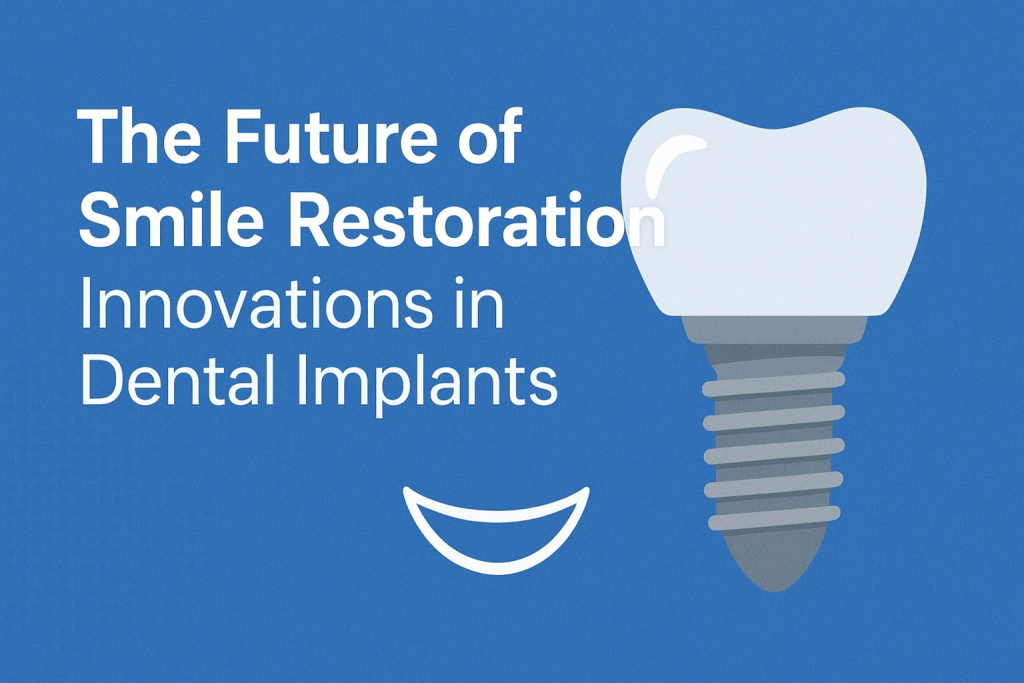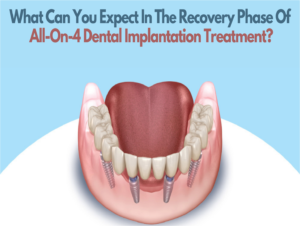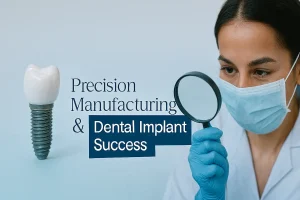The prospect of losing a tooth can be distressing, but the advances in dental technology have made smile restoration an exciting field with ever-improving outcomes for patients. Among these advances, dental implants stand out as a premier solution for those looking to regain the full function and aesthetics of their teeth. In this article, we will explore some of the most cutting-edge innovations in the world of dental implants that are setting the stage for the future of smile restoration.
Materials Revolutionising Implant Dentistry
Titanium has been the gold standard in implant materials for many years because of its durability and biocompatibility. However, researchers are now exploring alternatives such as zirconia. This ceramic material has emerged as a preferred choice for patients with metal sensitivities or those desiring a more natural-looking, tooth-colored base.
The innovations in material science are not limited to the implant itself. Advances in the development of abutments and crowns ensure that these crucial components of the implant system are stronger and more aesthetically pleasing than ever before. Researchers are continuously working on materials that provide better integration with the bone and gums, ensuring a longer-lasting and more natural-looking solution for patients.
Technological Advancements in Implant Design
Recent technological developments have also impacted the design of dental implants. The introduction of mini implants, for example, has enabled dentists to provide solutions for patients with insufficient bone mass without the need for extensive bone grafting. Alongside this, the designs that promote faster osseointegration—the process by which the implant fuses with the jawbone—are gaining traction. This means shorter recovery times and reduced risk of implant failure.
Computer-aided design and manufacturing (CAD/CAM) technology has led to the customisation of implants to fit the unique contours of a patient’s jaw. This tailoring not only improves comfort and appearance but also enhances the overall strength and integration of the implant.
3D Printing and Its Role in Dental Implantology
3D printing is redefining several medical fields, including dental implantology. Dental professionals can now use 3D printers to create surgical guides, which are used during the implant procedure to ensure precise placement. Moreover, the possibility of 3D printing the implants themselves is on the horizon. This would allow for even more customisation and faster production times, revolutionising the workflow within dental practices.
Navigational Surgery and Robotic Assistance
As digital imaging and diagnostic tools continue to improve, so does the precision of implant procedures. Navigational surgery, using real-time 3D imaging, ensures the precise placement of implants, mitigating risks and improving outcomes. Additionally, robotic assistance is becoming more commonplace in dental surgeries. Robots can execute the precise movements necessary for implant placement and reduce the possibility of human error, leading to higher success rates.
The Role of Bioactive Materials in Implant Dentistry
Bioactive materials are another frontier in implant dentistry. These materials can interact positively with the body, encouraging bone growth and healing. By incorporating bioactive substances into the implant’s surface, researchers aim to accelerate osseointegration and reduce the risk of infection, leading to better and quicker recovery for the patient.
Smile Restoration: Faster, Safer, and More Reliable
Thanks to these innovations, the process of smile restoration through dental implants is becoming faster, safer, and more reliable. The ongoing research in biomimetic materials, which aim to mimic the natural properties of human tissues, promises even further improvements in the integration and longevity of dental implants.
Patients are also benefiting from advancements in surgical techniques. Less invasive procedures, often aided by digital planning and 3D mapping, are reducing recovery times and discomfort while increasing success rates.
Patient Education and Customised Treatment Plans
Another important aspect of advancements in dental implantology is patient education. Today’s patients have access to a wealth of information, allowing them to make informed decisions about their dental care. Dentists are now able to provide more detailed and customised treatment plans, taking into account patients’ specific needs and lifestyle factors.
The development of monitoring tools and apps that patients can use to track their recovery and implant health is also on the rise. This patient-focused approach not only improves compliance with post-operative care but also helps detect potential problems early on.
The Economic Aspect of Innovative Dental Implants
A critical consideration in the development of new dental technologies is the cost. As the technologies become more widespread and the manufacturing processes more efficient, the cost of dental implants is poised to become more affordable to a broader population. This is critical in making these life-changing treatments accessible to all who need them.
The Future is Bright for Dental Implants
With the continuous evolution of materials, techniques, and technologies, the future is undeniably bright for those seeking dental implants. As we look to the horizon, we can anticipate a time when the process of getting an implant will be as routine as getting a filling, with improved success rates that virtually guarantee a restored smile.
In the interim, individuals looking for high-quality dental implants can seek out practices at the forefront of these innovations. Leaders in the field like the Sydney Implant Institute, are providing pioneering solutions that embody the future of smile restoration today.
In conclusion, while dental implantology is a field steeped in complex technology and intricate procedures, one thing remains clear: the future holds a promise of incredible possibilities for patients looking to restore their smiles. As advancements in dental implants continue to unfold, we can expect a new standard in oral healthcare that offers hope and confidence to millions worldwide.





